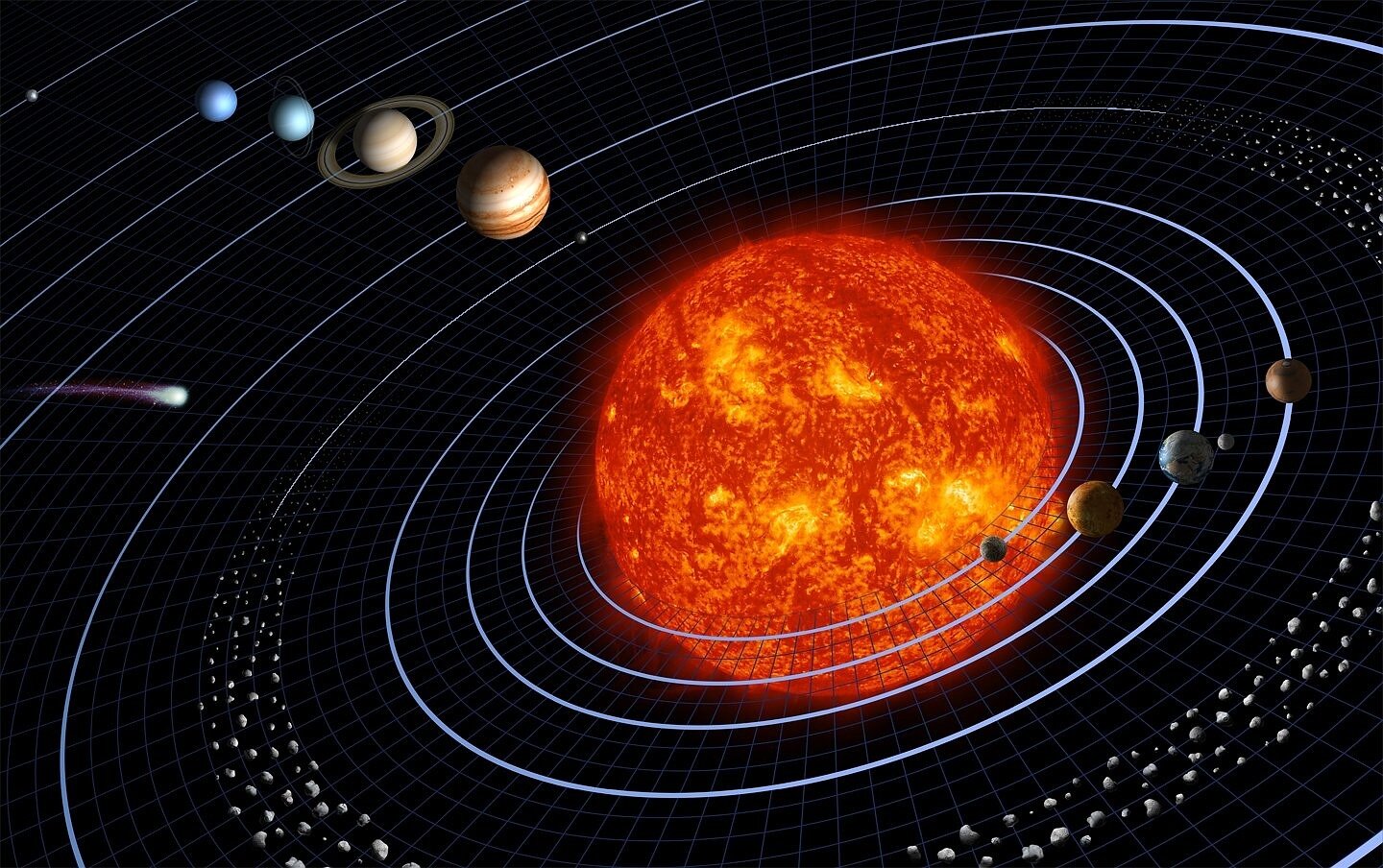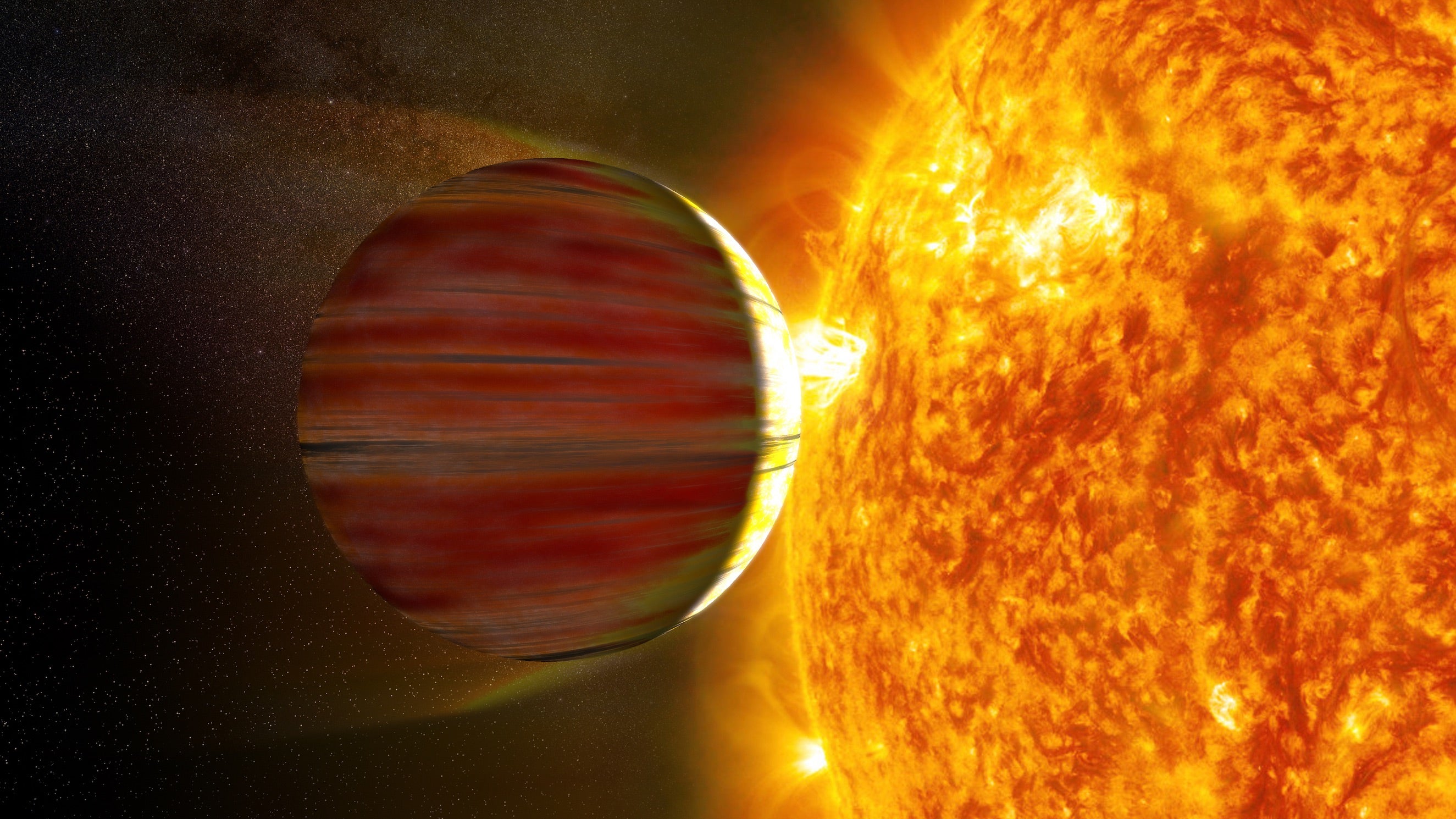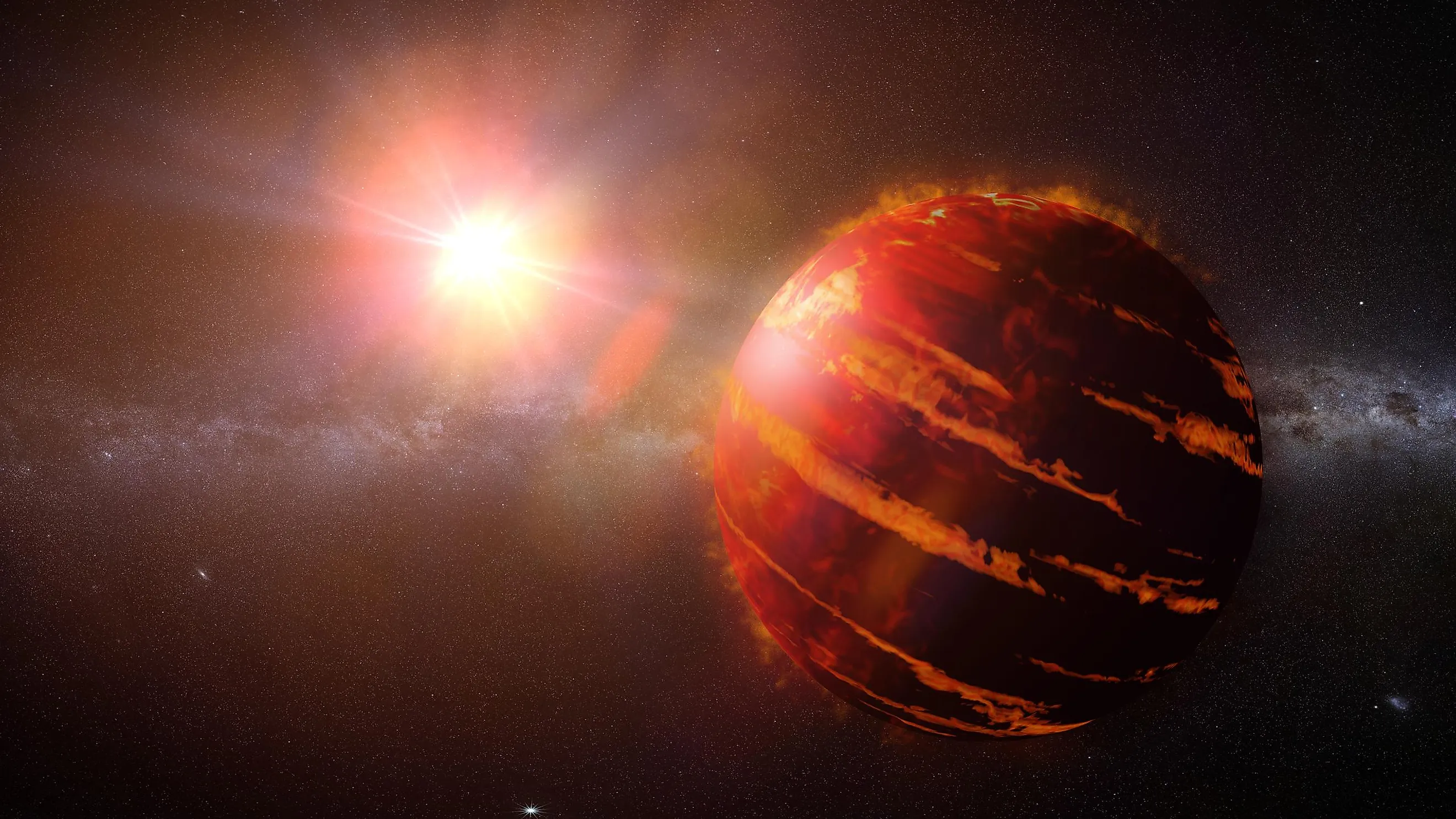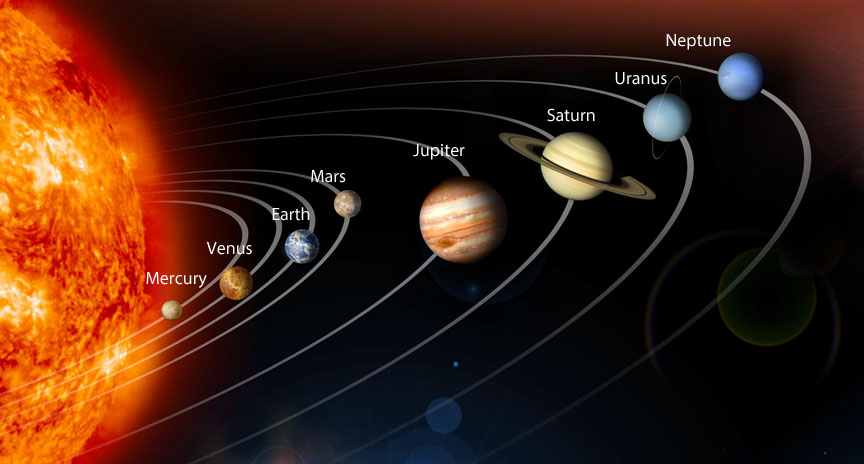Introduction
Which Planet Has The Largest Diameter: In the vast cosmic tapestry of our solar system, one celestial body stands out for its impressive and imposing size – Jupiter, the gas giant often referred to as the behemoth of our planetary neighborhood. Among the planets that orbit the Sun, Jupiter claims the title of having the largest diameter, making it a true colossus in comparison to its planetary peers.
With a diameter of approximately 139,822 kilometers (86,881 miles), Jupiter dwarfs Earth, more than 11 times over. Its immense size is a testament to its predominantly gaseous composition, composed mainly of hydrogen and helium. This colossal sphere is a captivating subject of scientific intrigue and wonder, beckoning astronomers and space enthusiasts alike to delve deeper into its mysteries.
Jupiter’s immense dimensions not only make it a fascinating study in planetary science but also endow it with a unique role in our solar system’s dynamics. Its immense gravitational pull has a profound influence on the orbits of other nearby celestial bodies, acting as a cosmic guardian of sorts. The largest planet in our solar system, we will delve into its awe-inspiring features, its significance in the grand tapestry of space, and the ongoing missions that continue to unveil its secrets, reminding us of the boundless wonders that our cosmos holds.

Which other planet has the largest diameter?
Jupiter is the largest planet in the universe. Its diameter is about 1. 3×105 km. Was this answer helpful?
After the Sun, which is the largest celestial object by diameter in our solar system, Jupiter holds the title of the largest planet with the greatest diameter. Jupiter is a gas giant and has a diameter of approximately 139,822 kilometers (about 86,881 miles) at its equator.
This immense size makes Jupiter significantly larger than all the other planets in our solar system, including Earth. In fact, Jupiter’s diameter is more than 11 times greater than that of Earth.
Jupiter’s size and mass contribute to its powerful gravitational influence, which plays a crucial role in the dynamics of our solar system. The planet has a distinctive appearance, characterized by its banded cloud patterns and the Great Red Spot, a massive storm system that has been observed for centuries.
While Saturn is another gas giant and one of the largest planets in the solar system, it has a slightly smaller diameter than Jupiter, making Jupiter the planet with the largest diameter in our cosmic neighborhood.
Which has the largest diameter in solar system?
Among them, the largest planet of our solar system is Jupiter. It is largest in both mass as well as volume. The mass of Jupiter is 300 times that of Earth. Its diameter i.e. 140,000 kilometers is about 11 times that of Earth’s diameter.
The largest object in the solar system by diameter is the Sun. The Sun is not considered a planet but rather a star. Its diameter is approximately 1.39 million kilometers (864,000 miles). To put this into perspective, the Sun’s diameter is about 109 times that of Earth.
The Sun is the central and most massive celestial body in our solar system. It primarily consists of hydrogen and helium and serves as the energy source that powers the solar system. Through a process called nuclear fusion, the Sun converts hydrogen into helium, releasing an immense amount of energy in the form of light and heat.
Planets in the solar system, including Earth, are significantly smaller in comparison to the Sun. While some planets like Jupiter and Saturn are quite large, they are still dwarfed by the Sun’s massive size. The Sun’s gravitational influence keeps all the planets and other objects in the solar system in orbit around it, making it the dominant and largest object in our cosmic neighborhood.
Which planet has a bigger diameter Jupiter or Saturn?
Saturn is the second largest planet in our Solar System. Only Jupiter is larger. Saturn is about 75 thousand miles (120,000 km) in diameter and is almost ten times the diameter of Earth. About 764 Earths could fit inside Saturn.
Jupiter has a larger diameter than Saturn. Jupiter is the largest planet in our solar system and has a diameter of approximately 139,822 kilometers (86,881 miles) at its equator. In comparison, Saturn, while still one of the largest planets, has a slightly smaller diameter of approximately 116,464 kilometers (72,367 miles) at its equator.
This size difference between Jupiter and Saturn is one of the distinguishing features of these two gas giants. Jupiter’s larger diameter contributes to its greater overall mass and gravitational pull. Additionally, Jupiter’s immense size is a significant factor in its ability to capture and retain numerous moons, making it one of the most moon-rich planets in the solar system.
Saturn is known for its stunning system of rings, which are made up of ice and rock particles. While Saturn’s diameter is smaller than Jupiter’s, its ring system is one of the most prominent and visually captivating features in the solar system, making both planets fascinating subjects of study and observation.

Which planet has the largest object?
The sun is the largest object in the solar system in terms of physical size. WIDTH ACROSS EQUATER. The largest planet in our solar system by far is Jupiter, which beats out all the other planets in both mass and volume.
The largest object in our solar system is the Sun. The Sun is a massive, luminous ball of hot, glowing plasma that serves as the central star of our solar system. It has a diameter of approximately 1.39 million kilometers (864,000 miles), making it significantly larger than any planet, moon, or other celestial body in our solar system.
The Sun’s immense size and gravitational influence play a central role in the dynamics of our solar system. It not only provides the heat and light necessary for life on Earth but also exerts a powerful gravitational force that keeps all the planets and other objects in orbit around it.
While the Sun is not considered a planet, it is the dominant and most massive object in our cosmic neighborhood. Its internal nuclear fusion processes generate the energy that powers the solar system and makes life on Earth possible. Studying the Sun and understanding its behavior is essential for astronomers and scientists seeking to comprehend the workings of the entire solar system.
What is the largest planet in our solar system by diameter?
The largest planet in our solar system by diameter is Jupiter. Jupiter is a massive gas giant, and its diameter measures approximately 139,822 kilometers (86,881 miles) at its equator. This immense size sets Jupiter apart as the largest planet, making it more than 11 times wider than Earth and significantly larger than any other planet in our cosmic neighborhood.
Jupiter’s colossal dimensions have profound implications for its gravitational influence on the solar system. Its massive size contributes to its powerful gravitational field, which plays a crucial role in the orbital dynamics of nearby objects, including other planets and asteroids.
Jupiter is a captivating celestial object for astronomers and scientists, known for its distinct features like the Great Red Spot, a massive storm system that has been observed for centuries. The planet’s composition, atmosphere, magnetic field, and moons are subjects of extensive research and exploration, shedding light on the mysteries of our solar system.
Jupiter’s status as the largest planet in the solar system, both in terms of diameter and mass, underscores its significance in shaping the dynamics and structure of our cosmic neighborhood.
How does Jupiter’s diameter compare to that of Earth?
Jupiter’s diameter dwarfs that of Earth, making it one of the most significant disparities among celestial objects in our solar system. Jupiter’s diameter is approximately 139,822 kilometers (about 86,881 miles) at its equator, while Earth’s diameter is approximately 12,742 kilometers (about 7,918 miles). This means that Jupiter’s diameter is more than 11 times greater than Earth’s.
To put this into perspective, you could fit over 11 Earths side by side across Jupiter’s equator. This massive size differential highlights the tremendous scale of the gas giant compared to our home planet.
Jupiter’s enormous diameter is not only a physical distinction but also a gravitational one. Its massive size results in a much stronger gravitational pull than Earth’s, affecting nearby objects and celestial bodies within the solar system. Jupiter’s gravitational influence is so significant that it plays a crucial role in the dynamics of our cosmic neighborhood, helping to shape the orbits and movements of other planets and asteroids.
Jupiter’s diameter is more than 11 times larger than Earth’s, making it a colossal giant in our solar system and a subject of great scientific interest and study.

Is the Sun larger in diameter than any planet in our solar system?
Yes, the Sun is larger in diameter than any planet in our solar system. In fact, the Sun is not only the largest object in our solar system by diameter, but it is also significantly larger than all the planets combined.
The diameter of the Sun is approximately 1.39 million kilometers (about 864,000 miles). This immense size is what classifies the Sun as a star, specifically a G-type main-sequence star (G dwarf star), while the planets in our solar system are much smaller in comparison.
To put this into perspective, the Sun’s diameter is about 109 times that of Earth. You could fit more than a million Earths inside the volume of the Sun.
The Sun’s enormous size is not only a defining characteristic but also a central force in our solar system. Its gravitational pull governs the motion of all the planets, asteroids, and other objects, keeping them in orbit around it. The Sun’s immense heat and energy output, generated by nuclear fusion in its core, provide the radiant energy that sustains life on Earth and drives the weather and climate systems throughout our solar system.
The Sun is unquestionably the largest celestial object in our solar system, both in terms of diameter and mass.
Which gas giant planet has the greatest equatorial diameter?
Among the gas giant planets in our solar system, Saturn holds the distinction of having the greatest equatorial diameter. Saturn is known for its iconic and stunning ring system, but it also stands out for its considerable size. Its equatorial diameter measures approximately 116,464 kilometers (about 72,367 miles).
Saturn’s significant diameter makes it one of the largest planets in our solar system, second only to Jupiter in terms of size. To put it in perspective, Saturn’s diameter is nearly 10 times that of Earth’s, making it a massive gas giant.
Saturn’s impressive size and the unique characteristics of its rings have fascinated astronomers and scientists for centuries. Its rings, composed primarily of ice particles and rocky debris, are a defining feature and a subject of ongoing study and exploration.
While Saturn has the greatest equatorial diameter among the gas giants, Jupiter remains the largest planet overall in our solar system, boasting both a greater diameter and mass than Saturn. These gas giants, along with the other planets, moons, and celestial objects in the solar system, continue to be sources of wonder and discovery for scientists and space enthusiasts alike.

Conclusion
The planet with the largest diameter in our solar system is Jupiter. With a diameter of approximately 139,822 kilometers (86,881 miles) at its equator, Jupiter stands as the largest of all the planets. Its vast size, more than 11 times that of Earth, is a testament to the incredible diversity and scale of celestial bodies within our cosmic neighborhood.
Jupiter’s enormous diameter plays a pivotal role in its gravitational influence on the solar system. This gas giant’s impressive size, coupled with its powerful magnetic field and distinctive features like the Great Red Spot, makes it a captivating subject of study for astronomers and scientists alike.
The size and characteristics of Jupiter, as well as its composition and behavior, contributes to our broader comprehension of the intricate dynamics at play in our solar system. The sheer scale of Jupiter and its prominent position as the largest planet remind us of the remarkable diversity and complexity of celestial bodies that orbit the Sun, deepening our fascination with the cosmos and our quest to unlock its mysteries.



